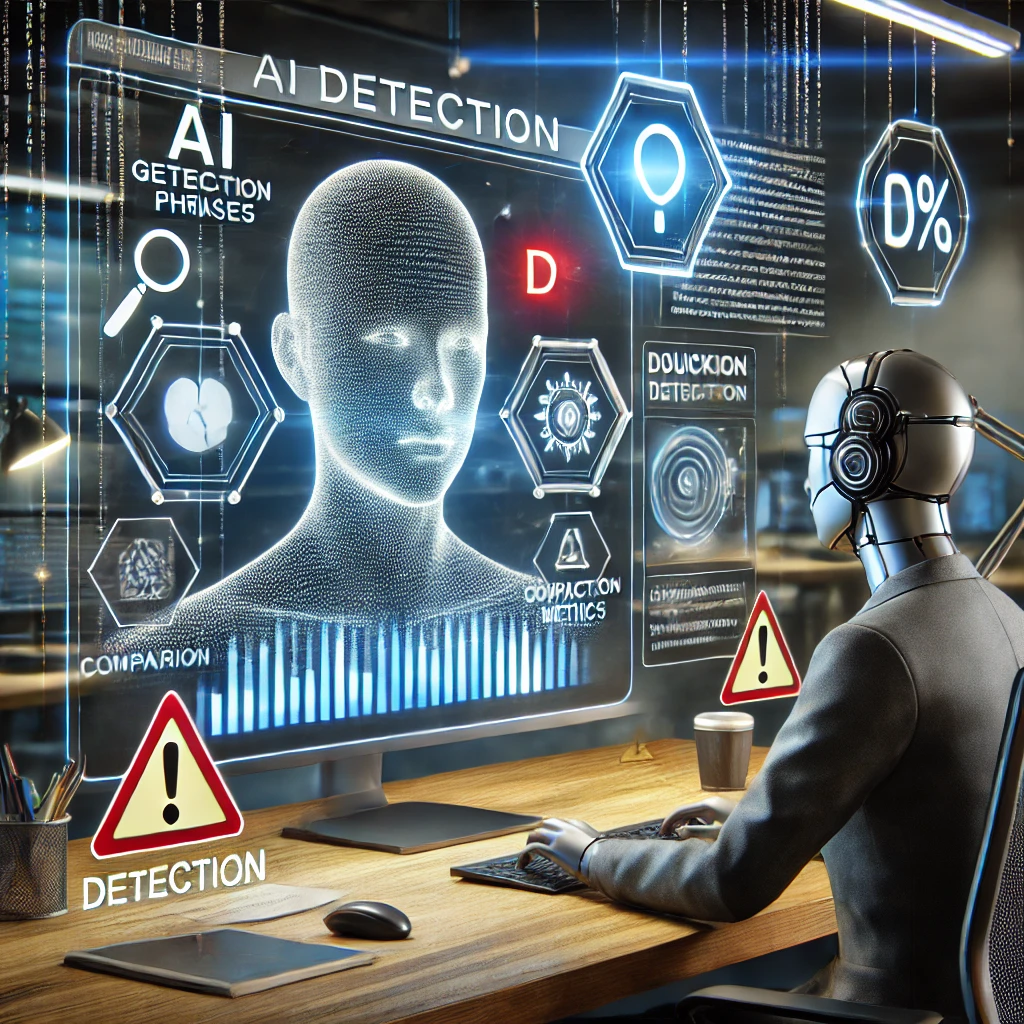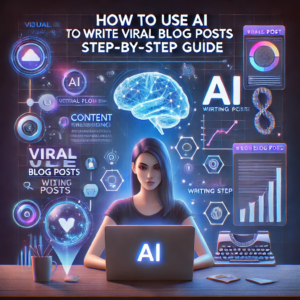How to Spot AI-Generated Content Quickly
Understanding Content Authenticity
AI detection has become an essential skill as artificial intelligence continues to create text, images, and even videos that closely mimic human-made content. Whether it’s a news article, a social media post, or a digital artwork, AI can generate content that appears authentic at first glance. However, AI often leaves subtle clues that can reveal its presence. Recognizing these signs can help you determine whether the content you encounter is truly human-generated or the work of an algorithm.
We strongly recommend that you check out our guide on how to take advantage of AI in today’s passive income economy.
Table of Contents
Why AI Detection Matters
With AI-generated content becoming more common, distinguishing between real and synthetic material is crucial for media literacy. Fake articles can spread misinformation, AI-created images can manipulate perceptions, and deepfake videos can deceive audiences. Being able to identify AI-generated content helps ensure accuracy, promotes transparency, and safeguards against misleading information. By learning to recognize the telltale signs, you can sharpen your ability to differentiate between human and machine-produced material.
Common Signs of AI-Generated Text
AI-generated text can often seem well-written, but inconsistencies and patterns can give it away. Some key signs to look for include:
1. Repetitive Phrases and Unnatural Language
AI tends to repeat phrases or sentence structures in ways that feel unnatural. While human writing varies in tone and flow, AI often relies on repeated patterns and awkward phrasing. If a text seems to reuse the same sentence structures multiple times, it may be machine-generated.
2. Lack of Context and Logical Flow
AI-generated content sometimes lacks proper logical flow. Sentences may appear disconnected, and transitions might feel forced. If an article jumps between unrelated topics without proper explanation, it could indicate AI involvement. The text may also include vague or overly generic statements that lack depth.
3. Overuse of Keywords Without Context
While keyword optimization is essential for SEO, AI-generated content often stuffs keywords unnaturally. If a blog post repeatedly includes the same phrase in a forced way, it may be AI-generated. Human writers integrate keywords naturally into the content, ensuring readability and coherence.
4. Incorrect or Fabricated Information
AI lacks real-world experience and sometimes generates false or misleading information. If an article includes questionable facts, exaggerated claims, or contradictory details, it may not be written by a human. Always fact-check content that seems too vague or overly confident without credible sources.
5. Inconsistent Writing Tone
Human writing has a natural rhythm, voice, and tone that AI struggles to replicate consistently. AI-generated text might shift between formal and casual language without a clear reason. If an article has sudden tone changes or unusual word choices, it may have been created by an AI model.
How to Detect AI-Generated Images
AI-generated images can be highly realistic, but they often contain subtle flaws. Here’s what to look for:
1. Unnatural Features and Deformities
AI struggles to create detailed human features accurately. Look for extra fingers, misshapen facial features, or distorted body parts. Hands and eyes are particularly difficult for AI to generate correctly, so they often appear unnatural in AI-created images.
2. Inconsistent Reflections and Shadows
Lighting and reflections in AI-generated images can be inconsistent. For example, a mirror may reflect a person’s body but not their face, or shadows might appear in the wrong direction. These inconsistencies indicate that an image was likely AI-generated.
3. Strange Text or Symbols in the Background
AI has difficulty generating readable text in images. If a sign or book cover in an image contains gibberish or distorted letters, it’s a strong indication that the image was created by AI. Authentic images will have clear, readable text that follows natural language rules.
4. Repetitive or Unnatural Backgrounds
AI-generated backgrounds often contain repetitive patterns or unrealistic details. If you notice an odd arrangement of trees, buildings, or other elements that seem too uniform, it could mean the image was AI-generated. Human photographs have natural variation and randomness.
Identifying AI-Generated Videos
AI-generated videos, including deepfakes, can manipulate real footage or create entirely synthetic content. To identify AI-created videos, consider the following:
1. Unnatural Lip Movements
Deepfake videos often struggle to sync lip movements perfectly with speech. If the lips seem slightly off from the audio, the video might be AI-generated. Natural human speech follows a fluid pattern, whereas AI-generated videos can have subtle misalignments.
2. Robotic or Unnatural Speech Patterns
Even with advanced voice synthesis, AI-generated voices sometimes sound slightly robotic. Listen for unusual pauses, lack of emotion, or an artificial tone. Human voices have natural inflections and variations that AI struggles to replicate convincingly.
3. Blurred or Mismatched Facial Features
In deepfake videos, facial features may appear slightly blurred, especially around the eyes and mouth. The blending of AI-generated facial overlays can cause strange distortions or unnatural smoothness in certain areas of the face.
4. Background Flickering or Distortions
AI-generated videos sometimes have slight distortions in the background. Objects may shift unnaturally, or lighting may flicker inconsistently. These imperfections occur because AI struggles to process motion and lighting in a way that appears entirely natural.
How to Verify Content Authenticity
Now that you know the signs of AI-generated content, here’s how to verify authenticity:
1. Use AI Detection Tools
There are several online tools designed to detect AI-generated text, images, and videos. Platforms like GPTZero, Originality.ai, and Hugging Face’s AI detection models can analyze content and determine its likelihood of being AI-generated.
2. Reverse Image Search
If you suspect an image is AI-generated, perform a reverse image search. This can help you determine whether the image has been used elsewhere or manipulated from an existing source.
3. Cross-Check Information with Reliable Sources
AI-generated articles sometimes include fabricated information. Always verify facts using reputable sources such as news websites, academic journals, or official reports.
4. Check Metadata and Source Information
Sometimes, AI-generated content lacks proper metadata or has unusual file properties. If an image or video lacks detailed metadata, it may have been AI-generated.
5. Trust Your Instincts
If something feels off about a piece of content, trust your instincts. AI-generated material often triggers a subtle feeling of unnaturalness. If an article, image, or video seems too perfect or slightly off, investigate further before believing or sharing it.
The Future of AI-Generated Content
As AI technology improves, detecting AI-generated content will become more challenging. However, by staying informed and using detection techniques, you can remain vigilant. AI can be a valuable tool, but understanding its limitations and potential risks is key to navigating digital content responsibly.
Final Thoughts on AI Detection
AI detection is an essential skill for evaluating online content. Whether identifying AI-written articles, detecting AI-generated images, or spotting deepfake videos, the ability to recognize synthetic content helps ensure authenticity. By looking for unnatural patterns, inconsistencies, and verifying information through reliable sources, you can make informed decisions about the media you consume.
Stay curious, keep practicing, and use these detection methods to navigate the digital world with confidence. Not everything you see or read is what it seems, but with the right tools and awareness, you can separate AI-generated content from human-created material.

We strongly recommend that you check out our guide on how to take advantage of AI in today’s passive income economy.




